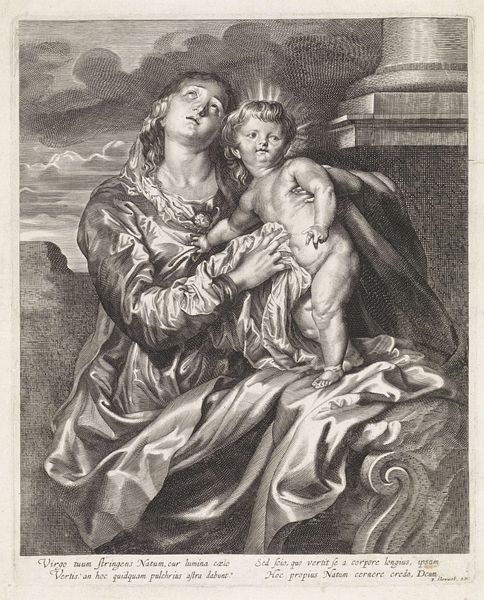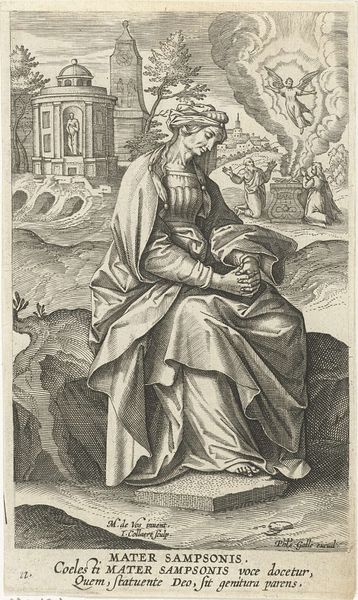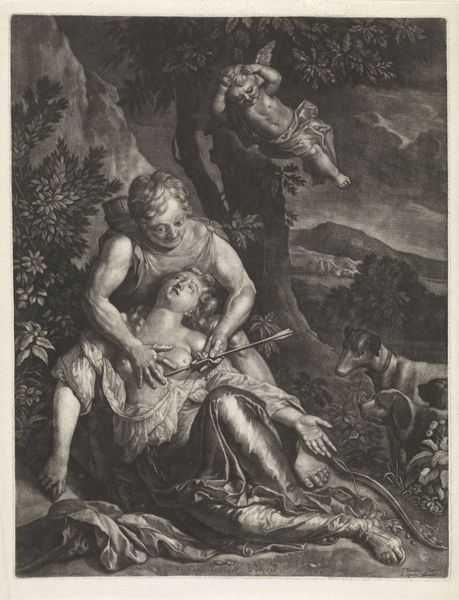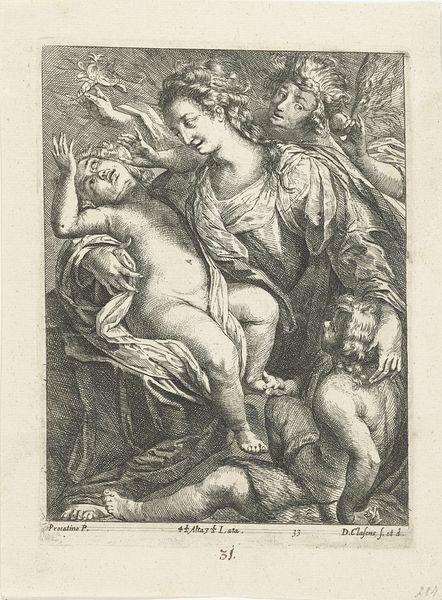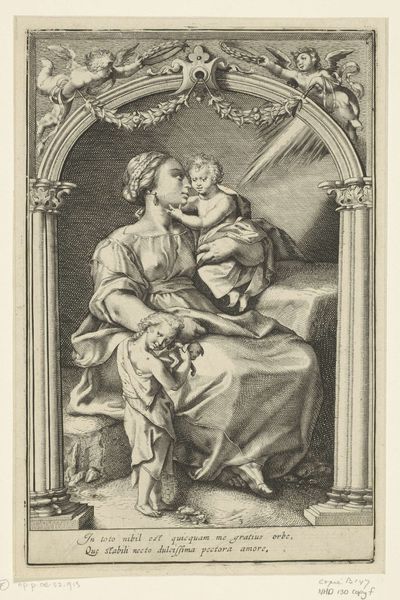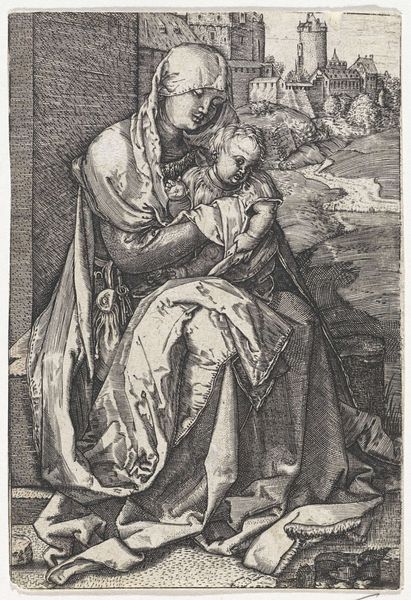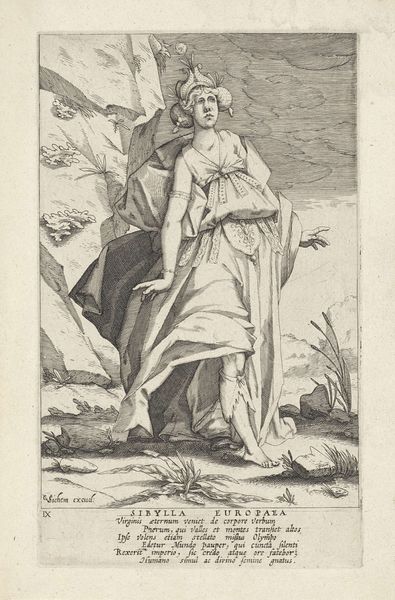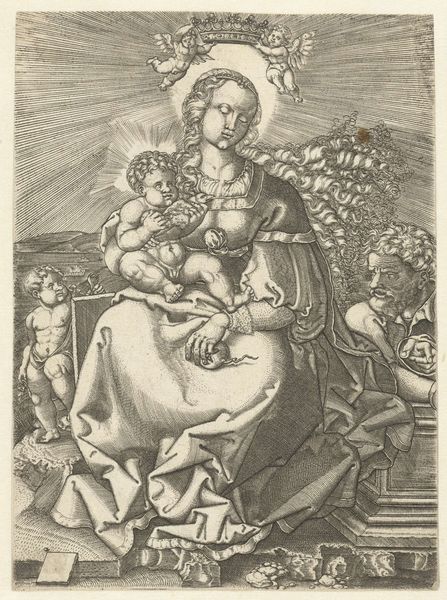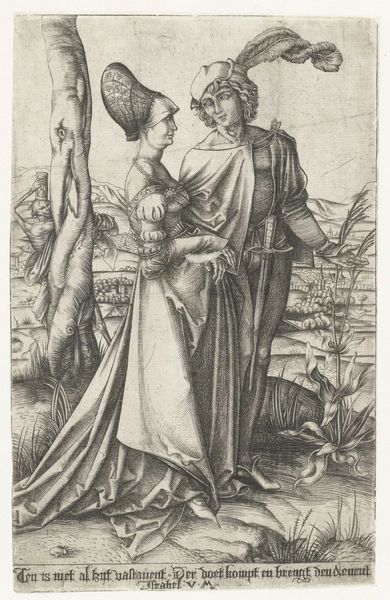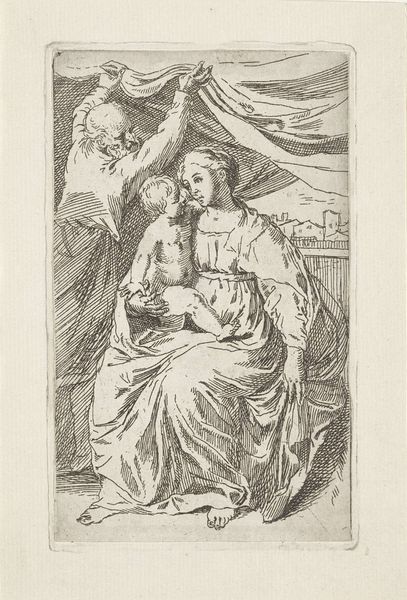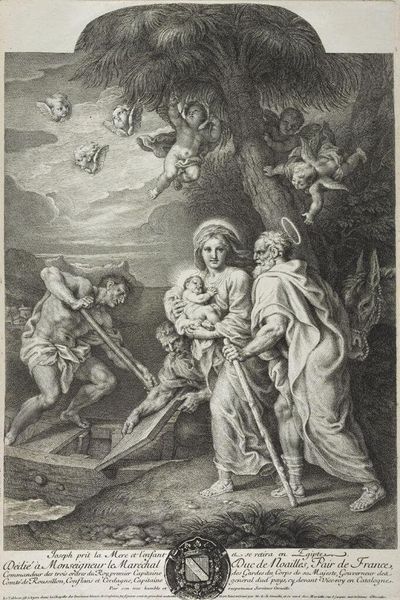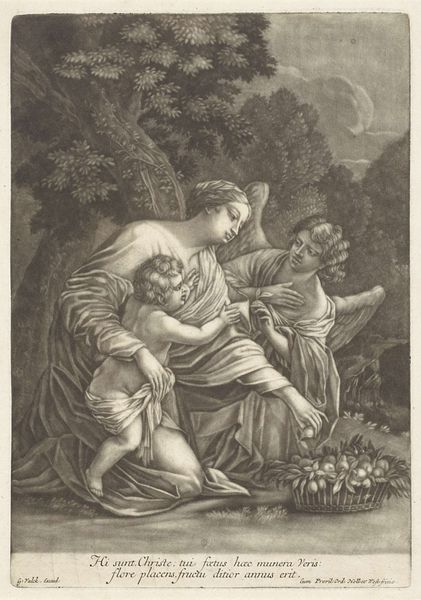
Maria met Christuskind en de kleine Johannes de Doper (verbeelding van de drie theologische deugden) 1603 - 1658
0:00
0:00
print, engraving
#
allegory
#
baroque
# print
#
old engraving style
#
figuration
#
history-painting
#
engraving
Dimensions: height 274 mm, width 182 mm
Copyright: Rijks Museum: Open Domain
Editor: Here we have an engraving by Abraham Hogenberg, made sometime between 1603 and 1658. It’s titled "Maria met Christuskind en de kleine Johannes de Doper (verbeelding van de drie theologische deugden)". It's quite detailed, especially considering the medium. The composition feels a little crowded to me, but the textures are amazing. What strikes you when you look at this piece? Curator: I'm immediately drawn to the material conditions that made this image possible. Consider the labor involved in copperplate engraving during this period. The artisan had to be highly skilled. Engravings like this weren't just aesthetic objects; they were commodities, participating in the religious and social marketplace of ideas. How do you think the reproduction and distribution of this image impacted its reception? Editor: That's a really interesting point. So, it’s not just about the image itself, but also how easily it could be reproduced and spread around. Would that democratize access to religious imagery, or would it cheapen the original sacred message? Curator: Both, I suspect. Consider, too, the economic relationship between the artist, the publisher, and the consumer. This print could be seen as a material expression of faith, but also as a product shaped by the demands of the art market and religious authority. Note also the figures in the background on the left, with what looks like crucifixes on a hilltop - are these elements merely included to set a scene? Editor: You’ve given me a lot to think about regarding production and context. It is incredible to think how the economics, distribution and access intertwine so deeply. Curator: Exactly. And by focusing on these elements, we move beyond simply appreciating the aesthetic beauty of the image to understanding its role in a specific cultural and historical context.
Comments
No comments
Be the first to comment and join the conversation on the ultimate creative platform.
